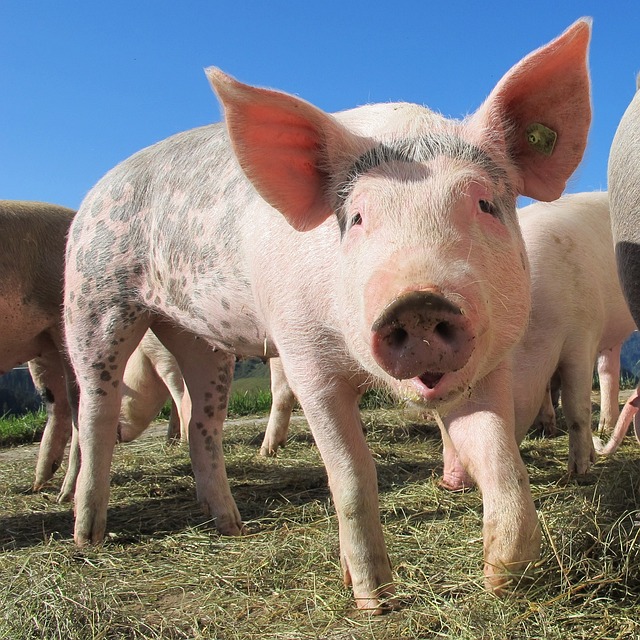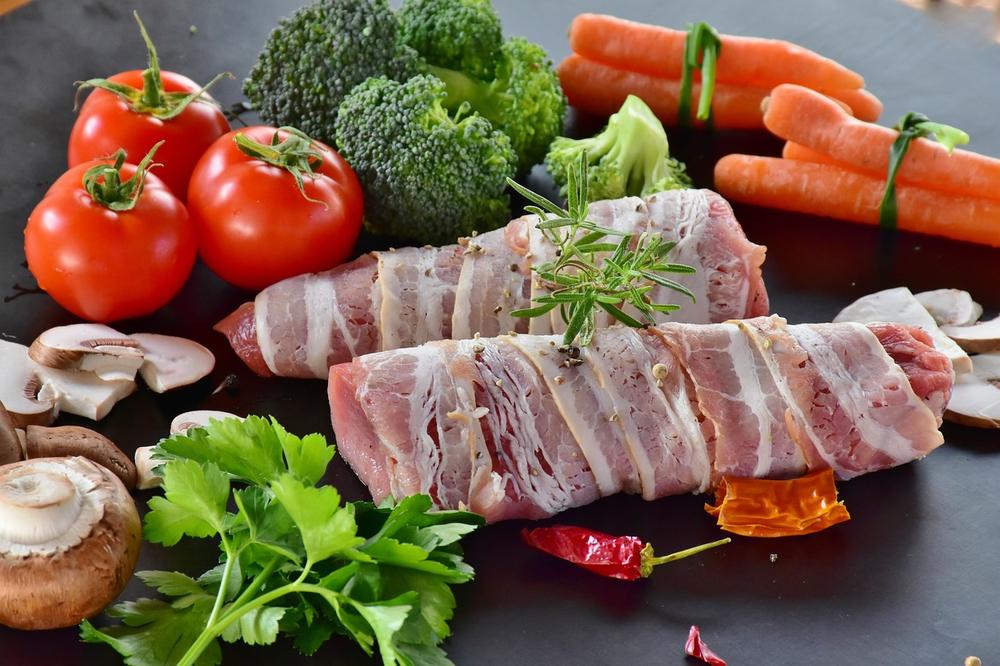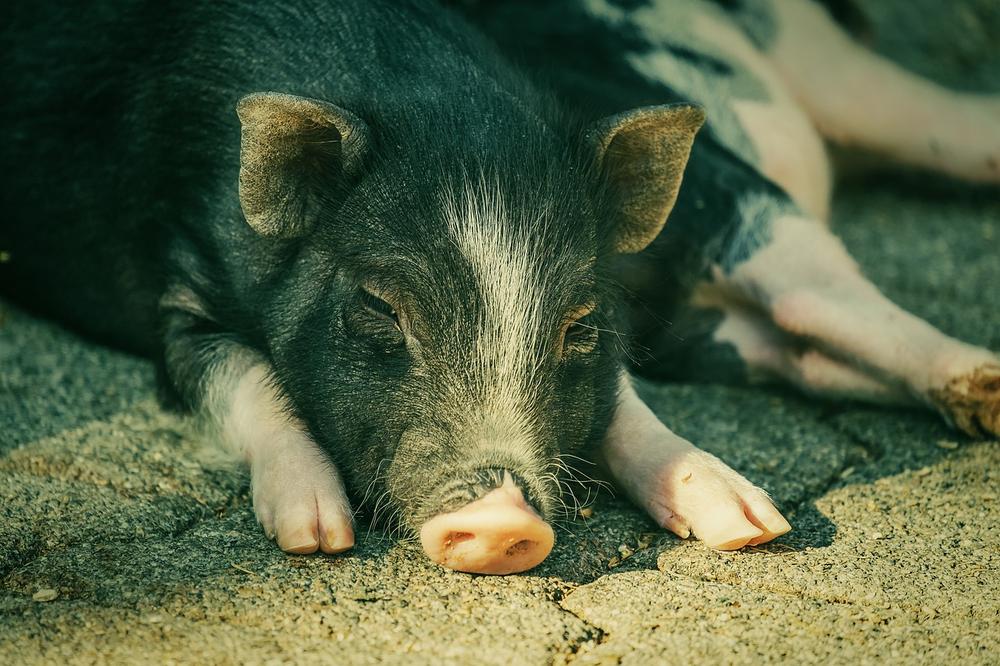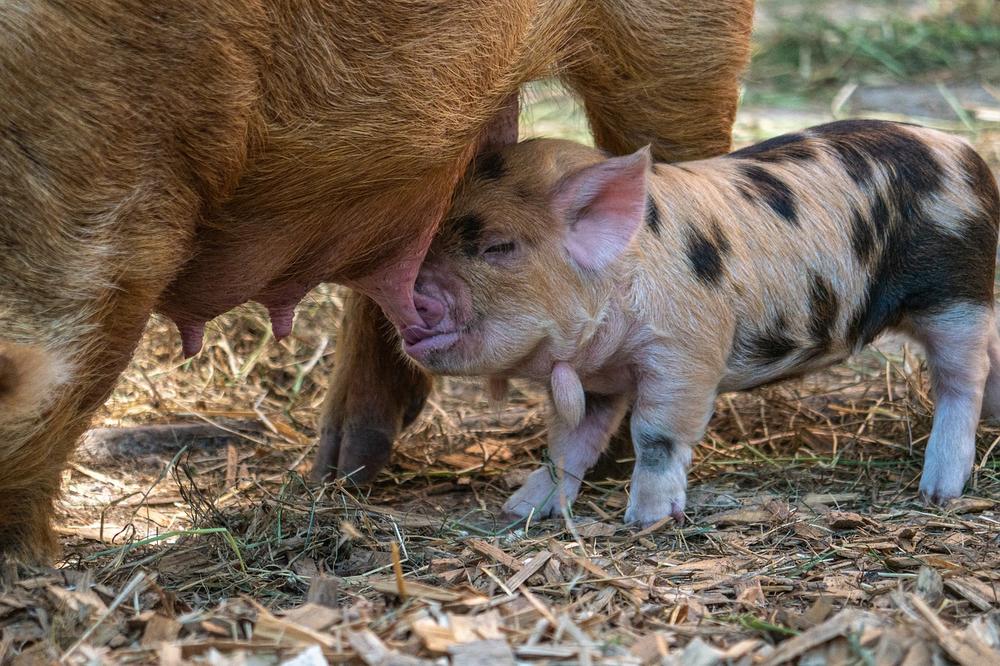Can Pigs Be TRAINED? (This Guide Will Help You Do Just That)

Are you tired of hearing that old saying, "you can't teach an old pig new tricks"?
Well, let me ask you this:
Have you ever felt the frustration of trying to teach someone something they just don't get? 😔
Yeah, we've all been there.
But fear not, because in today's guide, I've got the answers you've been searching for.
Keep reading, or you may be missing out on some serious pig-training magic.
Can Pigs Be Trained?
Guess what?
Pigs can totally be trained.
Listen up, my friend:
Pigs and dogs are alike.
They both dig the clicker training.
You know that little device with a distinct sound?
Click, and boom.
Your pig is all ears!
The click tells them they did something right on the spot.
Reward them with treats or love, and you're golden with a well-trained pig.
Now here's the thing:
Start training those piggies when they're teensy-weensy.
Why?
Well, adults might have deep-rooted habits that are tough to shake.
And guess what?
Pigs are pretty darn smart!
According to an animal expert, they've got great memories like dogs and are just as clever. At this point, you must be curious about what gets pigs pumped for training, right?
Well, let me spill the beans, it's food and affection, baby!
These cute critters are easy peasy to train when they know yummy snacks or belly rubs are in store. Training works wonders because it channels their natural instincts and makes life simpler.
Not only will it benefit you, but it'll also make your piggy happier and life easier.
Gotta admit, though, pigs can be stubborn sometimes.
But with the right incentives, time, and effort, they can learn almost anything.
Imagine this:
Trained pigs means less stress during handling, grooming, and vet visits.
Plus, training keeps them from being troublesome and destructive.
So, give it a go.
Your pig will be grateful, and you'll have a peaceful and rewarding bond.
And now, let's dive into the nitty-gritty of pig training!
This next section will give you all the tips and tricks you need to successfully teach your pig a variety of impressive commands and behaviors.
Trust me, it's going to be a rewarding journey for both of you!
Effective Techniques for Training Pigs to Perform Impressive Tricks
Teaching pigs to do cool tricks is really interesting.
Here are some tips that will help you train them successfully:
- Start by using a target stick or their nose as a focal point.
- Reward good behaviors like treats or petting, and shape those behaviors over time.
- Teach important skills such as walking on a leash, foraging, spinning, sitting, staying, and lifting their hoof.
- Keep their minds engaged by giving them food puzzles.
- Use a clicker to reinforce positive behavior and stop aggression.
- Mix it up with rewards like apples, grapes, praise, and scratching to keep them motivated.
- Establish words like "no," "stay," "come," and "leave it" to control their behavior.
- When they misbehave, use hand gestures and the word "no" to correct them effectively.
- Start training early to instill good habits and create routines and structures.
- Lastly, teach them to walk nicely on a harness and leash for safety and easier handling.
If you follow these techniques, your pigs will impress everyone with their incredible tricks, and you'll develop a great bond with these smart little buddies! 😄
And, if you thought teaching pigs tricks was impressive, wait until you hear about house training them.
That's right, not only can these intelligent animals learn jaw-dropping tricks, but they can also quickly become the masters of maintaining a tidy living space.
In this next section, I'll share with you some fascinating tips and techniques for house training your mini pig and creating a harmonious home environment.
So, grab those treats and let's dive in to uncover their secrets!
House Training a Mini Pig
Establishing a consistent schedule for house training
Maintaining a routine is crucial for house training your mini pig.
This way, you won't be caught off guard by any unexpected messes in your house. Make sure to take your pig outside to their designated spot after meal times, when they wake up, and before bed. By doing this, you'll let them know exactly when and where they should do their business.
The importance of toys in house training
Listen up:
Pigs are curious creatures.
And if they don't have anything to keep them busy, they'll wreak havoc in your home.
That's why incorporating toys into their routine is so important. Setting up a kiddie pool filled with different items can create a safe space for your pig to explore and play without causing any damage or making a mess.
When you keep them engaged, you prevent accidents and protect your property.
Teaching pigs to use a litter box and walk on a leash
Now here's something surprising:
Did you know that pigs can be trained to use a litter box just like cats?
It's true...
By introducing them to a litter box and rewarding them every time they use it, you'll speed up the housebreaking process. And guess what?
Pigs can also learn to walk on a leash.
This means you can take them for walks, giving them exercise while letting them relieve themselves in a specific area.

Imagine the convenience for both you and your pig!
And hey, don't forget this:
Pigs love to root and dig naturally.
So consider creating a special area, like a swimming pool filled with paper bags, blankets, and stones, where they can satisfy these instincts without damaging your home.
It's all about finding the perfect balance between meeting their needs and keeping your living space intact.
And if you're curious about the fascinating abilities of mini pigs, let me tell you about an exciting topic I've delved into in my article on Mirror Self-Recognition in Pigs.
Discover the intriguing insights on whether pigs can truly recognize themselves in a mirror.
It's a captivating read that might just surprise you.
Mini Pig Care and Housing Requirements

To properly take care of your mini pig and give them a suitable home, here are ten crucial things you must do:
- Make sure your mini pig has plenty of space both indoors and outdoors so they can move around freely.
- Set up specific areas where your pig can explore, play, and dig safely without any worries.
- Give your mini pig a cozy bed or a sheltered spot where they can rest comfortably whenever they need to recharge.
- Always have clean water available for your pig to drink whenever thirst strikes.
- Feed your mini pig a well-balanced diet consisting of fresh fruits, veggies, and high-quality pig feed to keep them healthy.
- Don't forget to provide opportunities for exercise, like going on walks together. 😊
- Taking your mini pig for daily walks is essential not only for their hoof health but also to prevent obesity.
- Keep your pig's living area squeaky clean by regularly removing any waste and keeping it nice and tidy.
- You need to schedule regular vet check-ups to ensure your pig is in good health and to promptly address any issues that may arise.
- Keep your mini pig mentally stimulated and happy by offering them toys, puzzles, and chances to socialize with others.
Your mini pig will lead a life full of joy and excellent well-being if you adhere to these guidelines.
Pig Nutrition and Veterinary Care
To keep your pig healthy, you must feed them a balanced diet and give them proper veterinary care.
Make sure you give them a feed that is specifically made for pigs and meets their nutritional requirements.
Consult with a vet to determine the right kind and amount of food for your pig.
Although the formulated feed should be their main source of nutrition, you can also give them small pieces of veggies or fruit as rewards during training.
Doing this not only maintains their health but also helps prevent obesity. By giving these treats in moderation, you ensure they get the necessary nutrients without overeating.
Consulting with a vet is always a wise choice when it comes to your pig's health.
They will give you advice on what's best for your pig and address any concerns you might have.
So, take good care of your pig's nutrition and seek guidance from a veterinarian regarding their dietary needs. 👍
Researching and understanding local regulations is essential before adopting a pet pig.
Certain areas impose restrictions or ordinances on pig ownership, such as breed limitations or the requirement for special permits.

And when it comes to pigs, preparation is key.
These animals can display strength, loudness, and potentially destructive behavior.
Therefore, you must be ready to handle these aspects.
Always remember, education and preparedness are crucial in ensuring a smooth and successful journey with your new pig companion.
Conclusion
Key Takeaways:
- Pigs can be trained just like dogs, learning tricks and routines.
- Start training pigs when they are piglets for easier results.
- Pigs are intelligent with good long-term memories, comparable to dogs.
- Pigs are motivated by food and affection, making them easy to train.
- Training helps redirect natural behaviors and simplifies everyday life.
- Pigs can learn anything with time and effort, like dogs.
- Untrained pigs can become challenging and destructive.
- Training prepares pigs for handling, grooming, and veterinary care.
- Pigs can be stubborn but are motivated by incentives.
- Teaching essential skills includes walking on a leash and foraging.
- Use rewards and positive reinforcement for effective training.
- Clicker training and mental stimulation are beneficial.
- Incorporate treats, scratching, and verbal praise for better results.
- Establish good behaviors with command words and hand signals.
- Establish routines, structure, and reward-based training from a young age.
And that's all for today folks.
If you wish to read more of my useful articles, I recommend you check out some of these: Pig Communication Methods, Pig Walking, Pigs' Speed, Pigs and Dogs Compatibility, and Pigs' Compatibility With Cats
Until next time,
-Chris Campbell